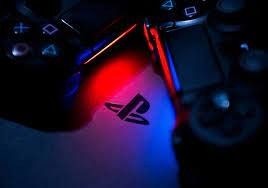Students Centric
Placements Report
Trackable results, real numbers
Reviews
Proven success, real voices
Trainers
Expert-led, Industry-Driven Training
Life at IIDE
Vibrant Spirit student life
Alumni
Successful Journeys, Inspiring Stories
Learning Centre
Webinars
Blogs
Case studies
Live, Interactive Masterclasses
Fresh Insights, quick reads
Real-life, Industry relevant
More
Hire from us
Hire Top Digital Marketing Talent
Work with us
Join Our Team, Make an Impact
Customised Training
Personalised digital marketing training for your company
Refer & earn
Simple, easy rewards
Contact us
Get the answers you need
About us
Know more about IIDE
Explore all course options
Trending
Professional Certification in AI Strategy
- Ideal for AI Enthusiast

Updated on Dec 12, 2025
Previously we looked into the SWOT Analysis of one of South Asia’s most known electronic retailers, Panasonic. This time, we will delve into the SWOT Analysis of Sony Corporation in full depth
Sony is a well-known global consumer electronics brand from Japan, with a reputation for cutting-edge technology, innovative digital concepts, and superior after-sales support. They began their sales mid-1900s and since then have made a name for themselves for unwavering quality.
One of Sony’s fallbacks is its marketing strategy, putting them at a disadvantage regardless of their superior quality products. Marketing evolves with time, according to the demands and preferences of the present population. If you want to learn more about doing effective marketing in today’s world, check out the Free MasterClass on Digital Marketing 101 taught by Karan Shah, CEO and Founder of IIDE.
Do you want to learn about how Sony Corporation has flourished over the years and the factors that helped it become a global giant? In order to answer that, in this case study, we will do a detailed SWOT Analysis of Sony Corporation. Before we begin, let us learn more about Sony, its founding, products, financial status and competitors.
About Sony
The Sony Corporation is a Japanese multinational business with headquarters in Tokyo. It is a significant technological business that is one of the world’s largest producers of consumer and professional electronic goods, as well as the world’s largest video game console manufacturer and publisher.
The electric rice cooker was the company’s first consumer product. Despite the dismal sales of this product, Totsuko, as the company was known then, didn’t suffer a significant setback as it had a profitable repair operation for radios and other electrical equipment. The company went big when they released their very own music device which was powered by a transistor.

In the 1960s and 1970s, Sony moved into the international markets of the United States and Europe, and it has been a significant worldwide player – long before most of its competitors.
| Founder | Masaru Ibuka |
|---|---|
| Year Founded | 1946 |
| Origin | Minato City, Tokyo, Japan |
| No. of Employees | 109,700 |
| Company Type | Public |
| Market Cap | $139.77 Billion |
| Annual Revenue | ¥8.999 Trillion |
| Net Profit | ¥1.191 Trillion |
What’s new with Sony?
Here’s what was buzzing around Sony recently:
- Sony PlayStation 5 VR2 headset: The PlayStation 5 VR2 headset is scheduled to be released in early 2023. It features a high-resolution display, eye tracking, and haptic feedback to provide a more immersive VR experience.
- Sony PlayStation 5 Pro console: There are rumors that Sony is developing a PlayStation 5 Pro console, which would be a more powerful version of the current PlayStation 5 console. However, Sony has not confirmed these rumors.
- Sony PlayStation Plus revamp: Sony is revamping its PlayStation Plus subscription service in 2023. The new service will offer three tiers of subscription, with each tier offering different benefits, such as access to a library of games, online multiplayer gaming, and cloud gaming.
- Sony Xperia 1 IV smartphone: The Xperia 1 IV is Sony’s latest flagship smartphone. It features a 6.5-inch AMOLED display with a 120Hz refresh rate, a quad-camera system, and a Qualcomm Snapdragon 8 Gen 1 processor.
- Sony Xperia Pro-I smartphone: The Xperia Pro-I is a unique smartphone that features a dedicated camera module with a large 1-inch sensor. This makes it one of the best smartphones for photography and videography.
- Sony WH-1000XM5 noise-canceling headphones: The WH-1000XM5 are Sony’s latest flagship noise-canceling headphones. They feature improved noise cancellation, better sound quality, and a more comfortable design.
- Sony WF-1000XM5 noise-canceling earbuds: The WF-1000XM5 are Sony’s latest flagship noise-canceling earbuds. They feature improved noise cancellation, better sound quality, and a more comfortable design.
- Sony Bravia XR TVs: Sony’s Bravia XR TVs feature a new Cognitive Processor XR that uses artificial intelligence to improve the picture and sound quality.
- Sony Airpeak S1 drone: The Airpeak S1 is Sony’s first professional drone. It is designed for cinematographers and photographers who need a high-quality drone for aerial photography and videography.
- Sony Vision-S 02 electric car: Sony is developing an electric car called the Vision-S 02. It is a seven-seater SUV that is expected to be released in 2025.
- Sony AI: Sony is investing heavily in artificial intelligence (AI). The company is developing AI-powered products and services for a variety of industries, including healthcare, finance, and entertainment.
Let’s now understand the target audience of Sony better with the help of a buyer persona.
Buyer Persona of Sony
A buyer persona generally refers to the detailed information of an ideal customer of a company. When it comes to Sony, people from India use it the most. This buyer persona will help you understand the attributes of a regular Sony user.
SWOT Analysis of Sony Corporation

Being the multinational, multi-billion dollar behemoth, Sony Corporation is an extremely complicated organisation that requires us to conduct a full-scale SWOT analysis of the company to get a better understanding of it. The following segments will explore each aspect of the SWOT analysis of Sony Corporation.
1. Strengths of Sony
Strengths refer to the internal strategic factors that support business growth and profitability. The following strengths contribute to profitability in Sony’s case:
- Broad Range: Meeting the demands of the whole market ensures significant profitability and long-term viability. Sony offers a diverse range of consumer products and services, ranging from mobile devices to home appliances and entertainment.
- Highly Innovative: Sony has made significant contributions to the consumer electronics sector, from the Crystal LED TV to the Blu-Ray disc, VCR, compact disc, Walkman, and alot more. Sony is one of the most inventive businesses in the world, having developed or assisted in the development of several breakthrough consumer items.
- Quality Assurance: Delivering promising quality products that meet the needs of the customers is taxing to achieve. Sony has been able to consistently deliver high-quality goods to its customers with the support of its significant R&D spending.
- Value Brand Reputation: Sony has been obsessively focused on meeting the demands of consumers from its inception, allowing the firm to cultivate a highly valued brand. Sony was placed #39 on the Top Regarded Companies list and #47 on the World’s Most Valuable Brands list in 2020.
- Loyal Consumer Base: Sony has a sizable and devoted customer base. For one thing, Sony’s loyalty programme for PlayStation users has assured that they will never consider moving to a competition.
2. Weaknesses of Sony
This aspect of the SWOT analysis identifies Sony’s weaknesses or the internal strategic factors that limit or reduce the company’s performance. Weaknesses create barriers to business growth. Sony’s weaknesses are as follows:
- Weak Marketing Game: Sony’s marketing efforts and promotional activities are lacklustre and significantly lower when compared to competitors such as Apple and Xbox. Regardless of quality or reputation, consumer items require significant marketing and promotion to sell.
- Lack of Affordability: The pricing of the brand is a major flaw since it is costly and not always promising. Countless individuals throughout the world are unable to buy Sony’s products due to their exorbitant cost. Customers are more likely to move to a less expensive brand or to a brand with a high resale value, such as Apple.
- Tardy Product Launches: The sector in which Sony operates is extremely competitive and demanding. In comparison to its competitors, Sony takes a long time to release new products. As a result, an unfavourable perception is formed, and purchase rates are reduced.
3. Opportunities for Sony
- Gamers Market: Sony’s PlayStation product line has established a dedicated and loyal gaming customer base. It even had a monopoly on the market for a while with its products. Despite the entry of new competitors, Sony claims the top spot with innovative and demanding technologies and features that every gamer seeks out for.

- Promising Innovations: While Sony is recognised for its innovation, it has fallen short in one important area: recognising changing customer demands and preferences. The firm has been developing novel items, but it cannot sell them purely on the basis of their quality. Focusing on innovation that meets the requirements of customers is the key to increasing sales and increasing customer loyalty. As a result, Sony must seize the chance.
- Acquisitions: The firm must concentrate on developing new growth channels and expanding its market. Acquisitions can aid in the company’s diversification into new markets. They may also be able to assist the firm in bolstering its position in current markets.
4. Threats to Sony
Sony must overcome and solve threats to its electronics, gaming, entertainment, and financial services businesses. Threats are external strategic factors that potentially bring down business performance. Sony faces the following threats in its external environment:
- Cyber attacks: These are a major threat against Sony. Hackers represent a threat to any firm that works in the film, electronics, or gaming industries, which can result in millions of dollars in damages and litigation.
- Competitive rivalry: Sony faces tough competition from other firms that are equally aggressive worldwide, in all areas of concentration, from LG in televisions to Samsung and Apple in cell phones and Nintendo in games. The company’s sales in India have been falling for three years in a row as competitors take market share. As new and established competitors step up their game, Sony may lose revenue in the future.
- Software Piracy: Imitation of software can decrease revenues from Sony’s gaming and related products. Thus, it is essential for the company to develop solutions to protect its software products and profitability rate
- Technology Advances: Technological advancements over the previous decade have enabled entrants like Techno and TCL to provide high-quality devices that can compete with Sony’s but at a lower cost.
With this, we come to the end of the SWOT Analysis of Sony Corporation.
Failed Campaigns of Sony
Sony more than often grabs attention with its unique marketing. But, there have been a few times when the campaign failed to connect with the audiences and gained backlash.
Here are a few examples of failed campaigns of Sony:
- Sony’s “White is Coming” campaign: In 2006, Sony launched a campaign to promote its new white PlayStation Portable (PSP) console. The campaign featured a poster of a white woman grabbing the face of a black woman, with the tagline “White is Coming.” The campaign was widely condemned for being racist and sexist, and it was forced to be withdrawn.
- Sony’s “PlayStation 3 Launch”: In 2006, Sony launched the PlayStation 3 at a price of $599. This was significantly higher than the price of its competitors, the Xbox 360 and the Wii. As a result, the PlayStation 3 sold poorly at launch.
- Sony’s “PlayStation Vita”: In 2012, Sony launched the PlayStation Vita, a handheld gaming console. The console was poorly marketed, and it failed to gain traction with consumers. Sony discontinued the PlayStation Vita in 2019.
- Sony’s “Xperia Z” smartphone: In 2013, Sony launched the Xperia Z smartphone. The smartphone was praised for its design and features, but it was also criticized for its high price and its fragility. The Xperia Z was not a commercial success.
- Sony’s “PlayStation TV”: In 2013, Sony launched the PlayStation TV, a micro-console that allowed users to stream PlayStation games to their TV. The console was poorly marketed, and it failed to gain traction with consumers. Sony discontinued the PlayStation TV in 2015.
Competitors of Sony Corporation
Being in the electronics industry, Sony is faced with major competitors. Their top 5 major competitors are:


Learn Digital Marketing for FREE
- 45 Mins Masterclass
- Watch Anytime, Anywhere
- 1,00,000+ Students Enrolled


Conclusion
As we wrap up our analysis of Sony’s impressive digital marketing strategy, it’s clear that staying up-to-date with the latest trends and techniques is key to success in the digital marketing world.
Whether you’re a marketing professional or just starting out, be sure to check out our free digital marketing masterclass to gain a solid foundation in the essentials of digital marketing.
Who knows, you might just develop the next big marketing strategy like Sony’s! Don’t forget to share your thoughts and comments on Sony’s strategy in the comments below.
Buyers Persona:

David Anderson
Los Angeles, California
Occupation: Film Director
Age: 42 years
Motivation
- Innovation and Aesthetics
- High-Quality Entertainment
- Creative Expression
- Brand Loyalty
Interest & Hobbies
- Cinematography
- Music
- Home Theater
- Travel
Pain Points
- High Equipment Costs
- Frequent Technological Changes
- Compatibility and Integration
- Maintenance and Repairs
Social Media Presence
- YouTube
Want to Know Why 2,50,000+ Students Trust Us?
Dive into the numbers that make us the #1 choice for career success

Courses Recommended for you
MBA - Level
Post Graduate in Digital Marketing & Strategy
Best For
Fresh Graduates
Mode of Learning
On Campus (Mumbai & Delhi)
Starts from
Jan 5, 2026
Duration
11 Months
Live & Online
Advanced Online Digital Marketing Course
Best For
Working Professionals
Mode of Learning
Online
Starts from
Jan 5, 2026
Duration
4-6 Months

Online
Professional Certification in AI Strategy
Best For
AI Enthusiasts
Mode of Learning
Online
Duration
5 Months

Offline
Undergraduate Program in Digital Business & Entrepreneurship
Best For
12th Passouts
Mode of Learning
On Campus (Mumbai)
Duration
3 Years
Recent Post
- Bosch 2025: Strategic Insights into Market Position, Challenges, and Growth Opportunities
- Nasher Miles Marketing Strategy 2025: A Journey from Trolleys to Trendsetters
- Beco Marketing Strategy 2025: Leading India’s Eco-Friendly Revolution
- P-TAL Marketing Case Study: Reviving India’s Timeless Craftsmanship
- Marketing Case Study: Rocca - Rising Above the Chocolate Crowd in India
- Unveiling What's Up Wellness Marketing Strategy: Key Tactics and Insights
- Lenskart Marketing Strategy 2025: AI, Content & Omni-Channel Success
- Ruban's Jewelry Marketing Strategy for Crafting Timeless Success in the Luxury Market
- Decoding iMumz’s Marketing Playbook: A Wellness Brand Built on Empathy
- Nish Hair Marketing Strategy: The Complete AIDA Playbook for D2C Success
Author's Note:
I’m Aditya Shastri, and this case study has been created with the support of my students from IIDE's digital marketing courses.
The practical assignments, case studies, and simulations completed by the students in these courses have been crucial in shaping the insights presented here.
If you found this case study helpful, feel free to leave a comment below.
Aditya Shastri leads the Business Development segment at IIDE and is a seasoned Content Marketing expert. With over a decade of experience, Aditya has trained more than 20,000 students and professionals in digital marketing, collaborating with prestigious institutions and corporations such as Jet Airways, Godrej Professionals, Pfizer, Mahindra Group, Publicis Worldwide, and many others. His ability to simplify complex marketing concepts, combined with his engaging teaching style, has earned him widespread admiration from students and professionals alike.
Aditya has spearheaded IIDE’s B2B growth, forging partnerships with over 40 higher education institutions across India to upskill students in digital marketing and business skills. As a visiting faculty member at top institutions like IIT Bhilai, Mithibai College, Amity University, and SRCC, he continues to influence the next generation of marketers.
Apart from his marketing expertise, Aditya is also a spiritual speaker, often traveling internationally to share insights on spirituality. His unique blend of digital marketing proficiency and spiritual wisdom makes him a highly respected figure in both fields.